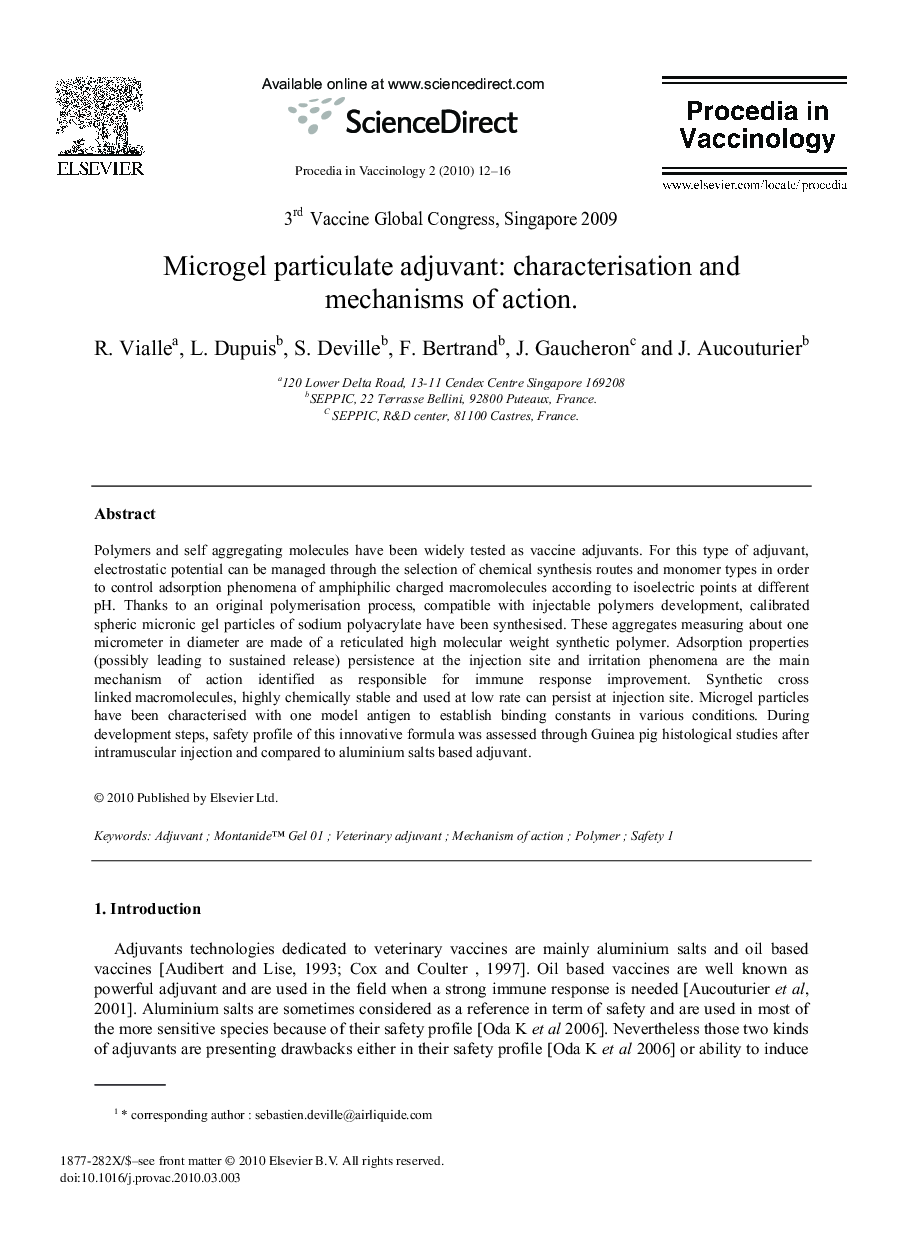| Article ID | Journal | Published Year | Pages | File Type |
|---|---|---|---|---|
| 2473795 | Procedia in Vaccinology | 2010 | 5 Pages |
Polymers and self aggregating molecules have been widely tested as vaccine adjuvants. For this type of adjuvant, electrostatic potential can be managed through the selection of chemical synthesis routes and monomer types in order to control adsorption phenomena of amphiphilic charged macromolecules according to isoelectric points at different pH. Thanks to an original polymerisation process, compatible with injectable polymers development, calibrated spheric micronic gel particles of sodium polyacrylate have been synthesised. These aggregates measuring about one micrometer in diameter are made of a reticulated high molecular weight synthetic polymer. Adsorption properties (possibly leading to sustained release) persistence at the injection site and irritation phenomena are the main mechanism of action identified as responsible for immune response improvement. Synthetic cross linked macromolecules, highly chemically stable and used at low rate can persist at injection site. Microgel particles have been characterised with one model antigen to establish binding constants in various conditions. During development steps, safety profile of this innovative formula was assessed through Guinea pig histological studies after intramuscular injection and compared to aluminium salts based adjuvant.
